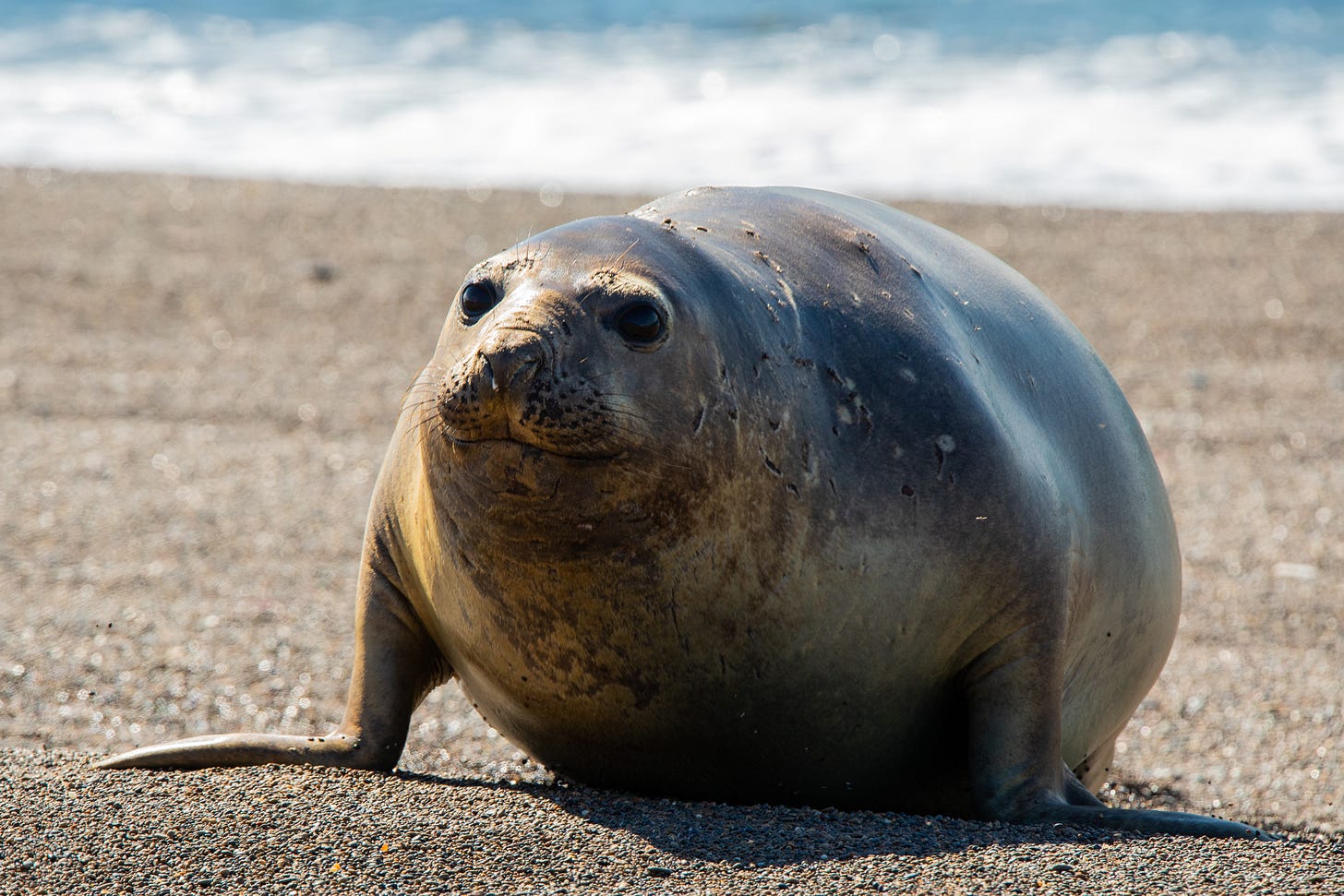Mapped whale migrations, skeletons for education, and a return to the wild
Big Blue Bulletin #55
Welcome to the latest edition of the Big Blue Bulletin – things have changed just a little bit around here as featured stories will now focus on whales, dolphins, and porpoises, with a little bit of commentary from me thrown in as well. Still, you can expect good news, bad news, and a cute creature in your inbox every Friday.
Let’s dive in 🐬
Ocean news
🗞️ Big news of the week -
🇮🇪 Why are Ireland’s whales disappearing?
Whale numbers are dropping off Ireland’s southwest coast and overfishing is most likely to blame.
Colin Barnes, a former fisher who set up one of the country’s first whale-watching tours, says the whales have abandoned his patch of ocean near Cork. All because of a collapse in sprat populations — the small, oily fish that whales rely on for food — due to unregulated trawling.
Sprats are vital not just for whales, but for other cetaceans and seabirds. Yet inshore trawlers can currently harvest them until their heart’s content, with no catch limits in place.
Ireland was once hailed as a cetacean sanctuary, helping boost numbers after the global whaling ban. But now, locals and conservationists are calling for urgent protection of this key forage fish — before it’s too late for the whales that depend on them and the ecotourism that depend on the whales.
🇨🇱 When a boat came across a huge humpback whale carcass in Chile, they decided to do something amazing
A humpback whale that washed up dead in Chilean Patagonia is being preserved by conservationists as a striking new tool for marine education.
The skeleton was recovered by Rewilding Chile and the Museo del Río Seco, after a local boat crew came across the carcass offshore near Cape Froward. The bones will now be displayed to help connect people to the region’s wildlife and support calls for national park status in the area.
The team hopes the preserved remains will become a powerful reminder of the scale and richness of life in southern Chile — and the urgent need to protect it.
🇦🇺 Winter brings Australia’s ‘humpback highway’ to life and peak hour is about to begin
Thousands of humpback whales are making their way up and down Australia’s coastlines again, as winter kicks off the annual whale migration.
Every year, whales travel from Antarctic feeding grounds to warmer breeding waters, with peak movement expected from mid-June to early July. Dr Vanessa Pirotta, a Sydney-based whale scientist, says: “Anywhere you can see the ocean, you have a chance of spotting a whale.”
But scientists also say the route is changing. Some humpbacks are now staying in colder southern waters, like Tasmania, year-round which is a possible sign of shifting migration patterns.
🇨🇳 Two Yangtze finless porpoises have been returned to the wild for first time in China
Two Yangtze finless porpoises have been returned to the wild for the first time, according to a new study by researchers at the Chinese Academy of Sciences, a hopeful milestone for one of the world’s rarest freshwater mammals.
The pair, both males, were relocated from a managed reserve to a protected section of the Yangtze’s Laowan Branch, where they spent two years adapting to the environment. Once researchers were confident in their ability to hunt and navigate, they were released.
The Yangtze finless porpoise has seen steep declines due to habitat degradation and fishing gear entanglement but within three days, this pair had joined a local individual and re-entered the river’s core population.
🗺️ Scientists put three decades of whale migration data into a digital map
Scientists have created a digital platform to track whale migration across the globe, using more than 30 years of satellite tagging and research.
The Protecting Blue Corridors map, developed by a coalition of conservation partners including WWF, lets users see how whales move across the ocean and where they’re most at risk from ship strikes, fishing gear, noise, pollution and climate change.
The aim is to help protect critical migration routes, known as blue corridors, by guiding decisions on conservation measures. “Blue corridors are more than migration routes,” said WWF’s Chris Johnson. “They’re lifelines for the ocean’s giants and the ecosystems they support.”
🏴 Killer whales ‘may become familiar sight off Fife coast’ after several orca sightings
Orcas have been seen off the coast of Fife in a rare appearance that has sparked excitement among wildlife watchers.
While sightings of killer whales are typically limited to Scotland’s west and north coasts, dozens of reports came in earlier this week from the Firth of Forth. Footage shared by the Scottish Seabird Centre showed two orcas surfacing side by side.
The unexpected visit has prompted speculation that orcas could become a more familiar presence along the east coast.
Have a great weekend! 📸
Cover image by John Goodridge.





The digital map of whale migration is very cool. Helps my visually oriented brain comprehend migratory patterns!